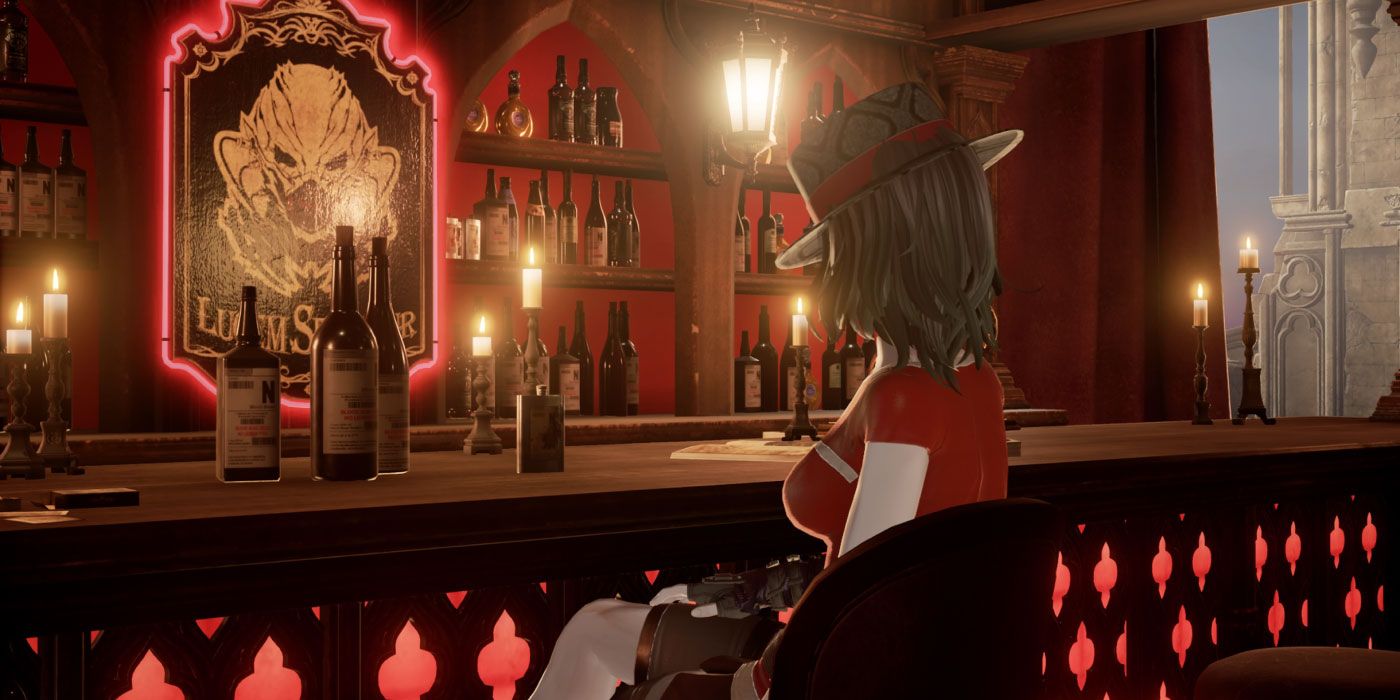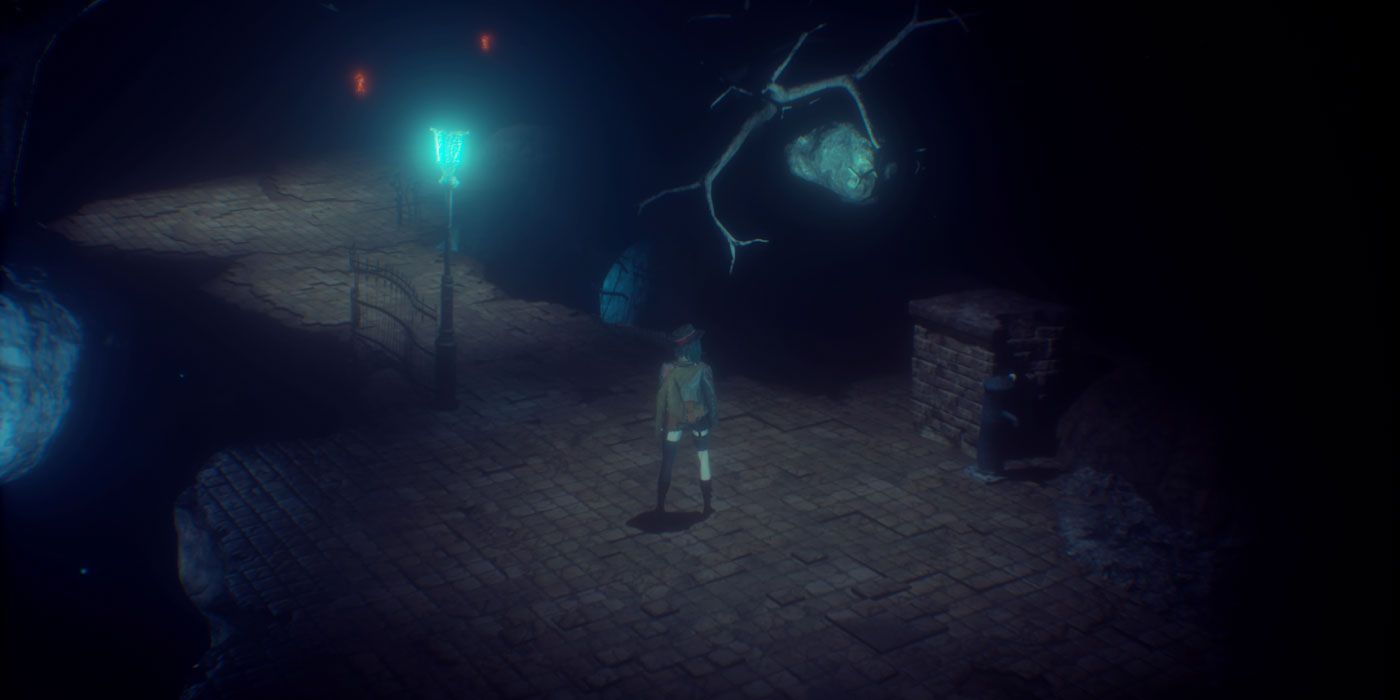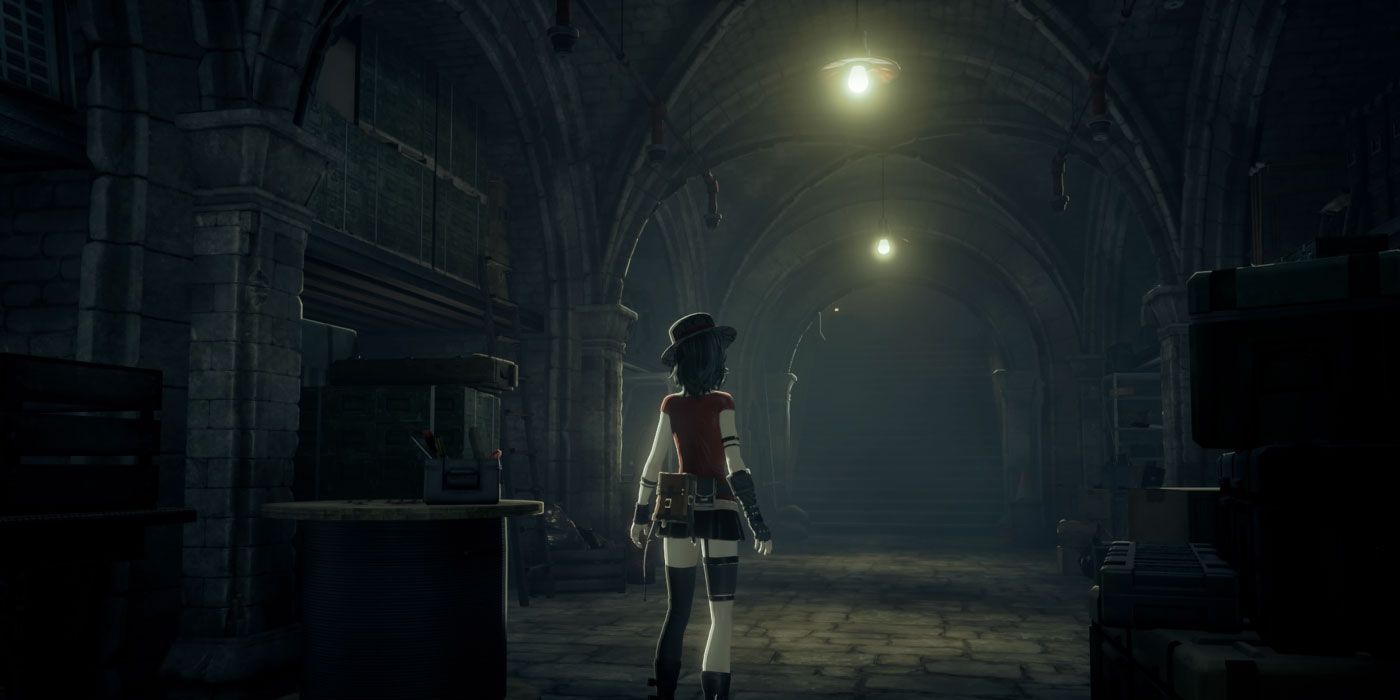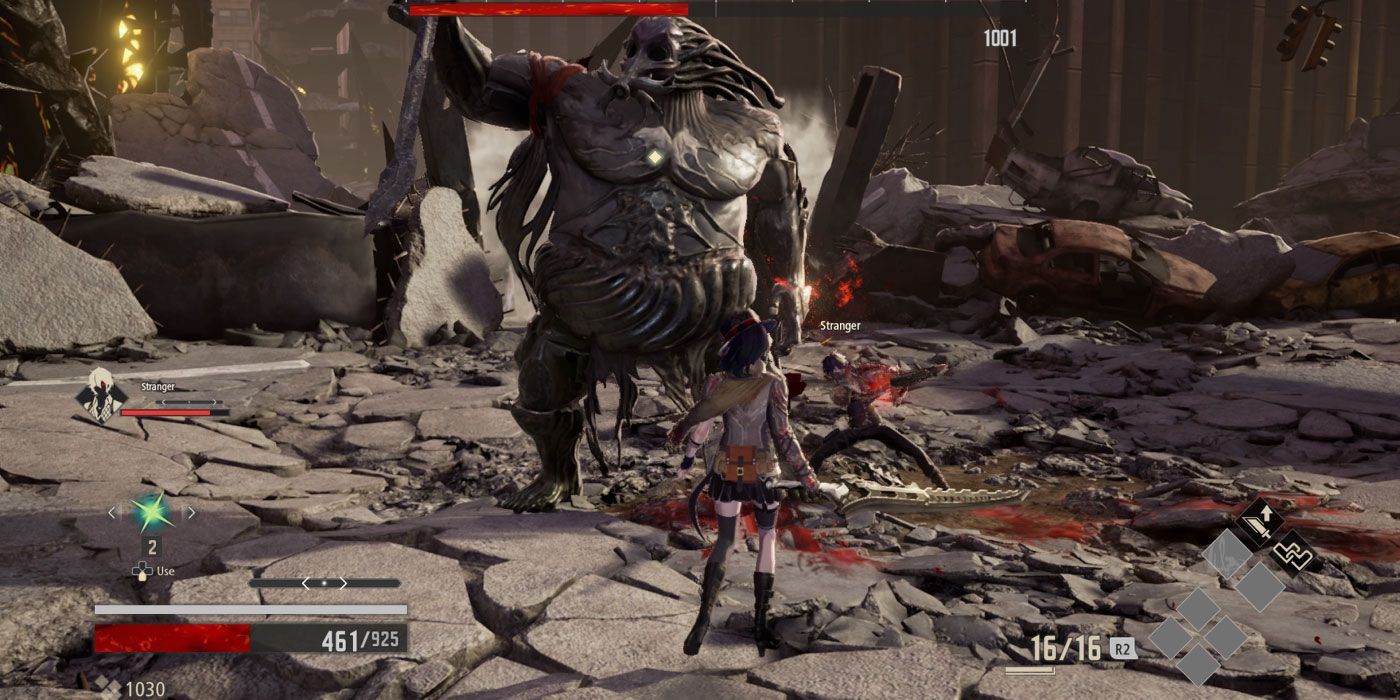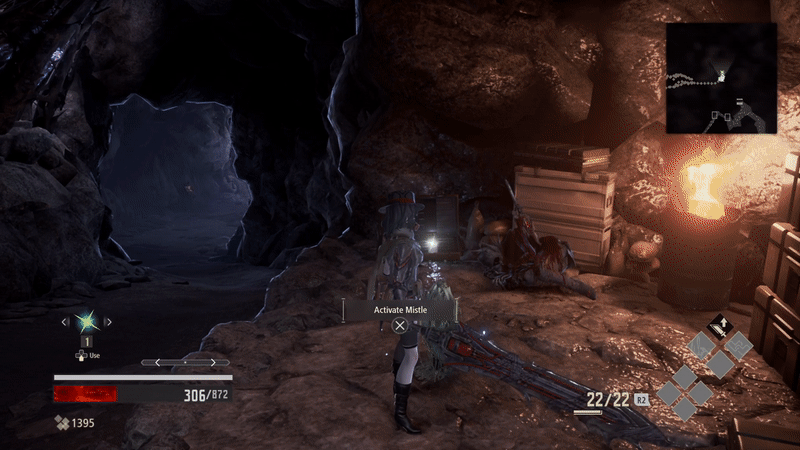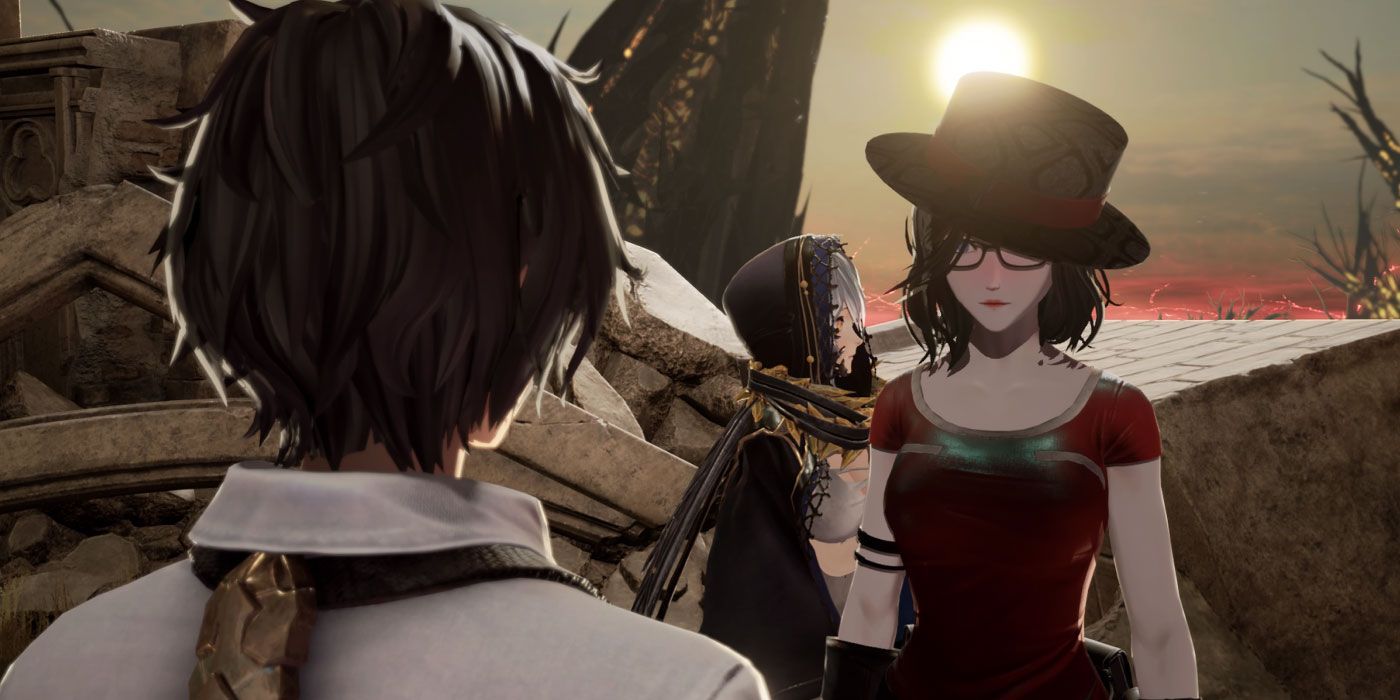Bandai Namco recently released a demo for the anime vampire game Code Vein that gives players a rather lengthy taste of what they can expect from the upcoming Souls-like. The demo introduces players to the story and takes them through the first cavernous area of the game's world. Players will spend the opening hours of Code Vein fighting large monsters with large weapons and winding their way through the twisting caves.
Code Vein has garnered a lot of comparisons to the Dark Souls franchise. These days, a lot of games get that comparison, but they don't always earn it. While a lot of them have Souls-like qualities, many of them don't aim to emulate the formula as directly as Code Vein. The opening few hours illustrate the many similarities Code Vein has to Souls games, but at the same time, highlight many of their differences.
The differences in Code Vein come with an easing up on some of the more tedious and less approachable aspects of Dark Souls without sacrificing the difficulty or the structure. This overview will talk about the gameplay in the demo but will not go into story details.
Gothic Horror with an Anime Flare
The Dark Souls games have a heaviness to them, not just to the combat and gameplay, but to the whole visual style. The color palette tends toward muted brown and grey tones that flood the whole world with a dreary darkness. Stylistically, the graphics lean into a more realistic feel with a detail and fidelity that aims to emulate shadowy medieval locations.
Code Vein also goes the gothic horror route, but it takes a different approach. The graphics have a softer, more cartoonish feel that fits with the anime style they have decided to pursue. Character models look more stylized and the world, while still detailed, has less realism. The players spends bulk of the demo running around in caves fighting monsters. The caves have a similar grey-brown tone to the Dark Souls games. But when the player leaves the caves and walk around the broken city or their home base, things look a lot brighter and more colorful without sacrificing the gothic tone.
Twisting Caves and Locked Doors
While Code Vein looks quite a bit different visually, it borrows a lot of the exploration mechanics directly from Dark Souls. The first level of the demo starts the player at an entrance and the player, if exploring thoroughly, will quickly come upon a locked door. After turning around and navigating through the maze-like caverns of the underground cave, players eventually will find a stairwell that will bring them back to the locked door. Open it, and they return to where they started. Now, they have opened a shortcut.
This structure comes straight out of Dark Souls and it works exactly the same way here. Code Vein, however, adds one big quality-of-life improvement. The game has a map. As the player explores the caverns, they slowly reveal more and more of the map. This give the player a reference for easy back tracking. It might also make it easier to track down those Dark Souls-like hidden areas.
Some Souls fans might find this annoying. Part of the appeal of those games for some is back-tracking over the same ares multiple times in order to learn the layout and truly internalize it. While Code Vein sacrifices that, it might make up for it by making the game more accessible to new players.
The Same Gameplay, A Different Progression
Code Vein plays similarly moment-to-moment to Dark Souls. The combat features large weapons that lock the character into drawn out animations in order to perform attacks. Many of the weapons tower over the player the same way they do in the Souls games, and the weapons strike a balance between faster with less damager or slower with more damage. The game features light, heavy, and charged attacks, and while the attacks default to the face button, players can re-map them to the shoulders.
However, Code Vein's weapon and progression system makes a lot of changes. The game features Blood Codes which players can collect from NPCs or bosses. The Blood Codes act as a kind of class system and dictate whether the player can use larger and slower weapons, smaller and faster weapons, ranged weapons, or a combination. While in Dark Souls, players can pick up different kinds of weapons, the effectiveness of those weapons has to do with specific stats that players can upgrade. Code Vein has upgradable stats too, but the Blood Codes add an extra level to dictating play style.
Code Vein also makes finding weapons less of a big deal than weapons in Dark Souls. Players will find many different kinds of weapons scattered throughout the world and can even pick up some enemy weapons after defeating them. That said, for special weapons, the hub that the player will return to in the game has a weapon store.
Less Difficult, but Still Hard
Dark Souls enemies will brutalize players right off the bat. This will teach players quickly that they need to find a playstyle that lets them progress, but it can also discourage some players who hoped for more of an action game.
Code Vein takes a slower approach to difficulty. The enemies in the first area only become dangerous if they group up on the player, otherwise they go down without much of a hassle. The opening area does hide a few tough enemies early on that can surprise players, but for the most part, the difficulty seems to ramp more slowly.
Code Vein also introduces an AI companion system that greatly reduces the difficulty of the opening section. The. player has a companion with them for most of the intro. The player can step back and let the companion do all of the work for them, which really cuts into the game's toughness. Hopefully this will change once the player progresses further, but either way, the player will get a chance to get a feel for the game before it gets too hard, and that might encourage them to stick around longer.
The opening section featured a boss battle as well. The boss goes down much easier than most Dark Souls bosses. The player has their companion in this section too, and while the companion helps less here than in the caves, they still distract the boss enough to give the player a chance to escape and heal. The boss has multiple phases and locks the player inside of fog-covered doorways just like a Dark Souls boss.
While this first boss wasn't too difficult, it was the first one. Code Vein has shown off later bosses in the game and they look to get a lot tougher. Perhaps the game will punish players a little more later. And while the companion system seems to take some of the sting out of the difficulty if the player plays with an AI character, playing co-op with a friend might feel different and more challenging. The demo did not have that option available.
That Souls-like Gameplay Loop
For all of the changes that make Code Vein feel more approachable to action-RPG fans, one thing remains the same. Dark Souls' brutal difficulty at times makes it a game about surviving until the next bonfire. Bonfires let players cash in their souls for upgrades, rest and recover, and give players a new starting point so they don't have to traverse as far.
Code Vein has changed "bonfires" to "mistle," but otherwise keeps the same structure. As players explore the world, they will save, heal, and upgrade by activating mistle. The mistle operates just like the bonfires in Dark Souls, and while the difficulty in the demo won't kill the player as much as Dark Souls will, it might still drain their health and resources enough to get them excited to see the next mistle. The mistle in Code Vein appears a bit more frequently in the opening area than it generally will in Dark Souls, but that might change in later areas of the game beyond the demo.
If players die, they will restart at mistle. Players collect "haze" while they defeat enemies and can use this, like the "souls" mechanic, for upgrades. If players die, they drop all of their haze and respawn at mistle. Players can get their haze back if they go to the place they died, just like in Dark Souls.
A Gateway to Dark Souls
These changes might make hardcore Dark Souls fans wince a little bit. The Code Vein definitely smooths the edges a little bit in its opening sections, and that might turn Souls fans off. But at its core, the thing that makes Souls games unique still exists within Code Vein. Plus, ten percent of players didn't get to Dark Souls 3's first bonfire. Code Vein might make a great entry point for players curious about Souls-likes who found the difficulty off-putting.
Code Vein will release on PC, PS4, and Xbox One on September 29.

